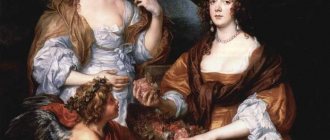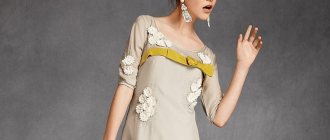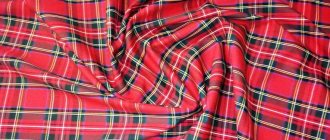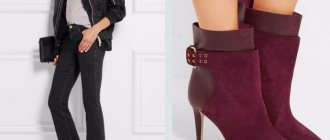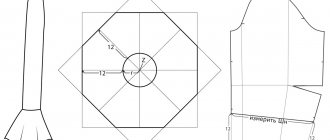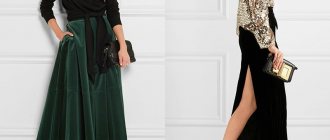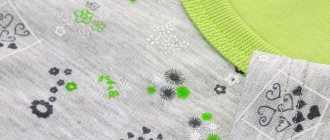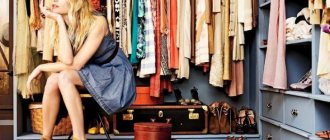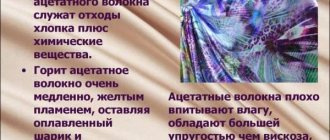Who is James Jebbia
Supreme was founded in 1994 by James Jebbia. He was born in the USA, but until the age of 19 he grew up in the UK, in Sussex, where he once worked at a Duracell battery factory. James returned to his home country around 1984/85.
In the 1980s, a young Jebbia began working at the now-defunct Parachute in SoHo with founder Eddie Cruz (later manager of Union Los Angeles, owner of the Stussy Los Angeles Chapter Store and founder of the Undefeated brand), with whom he put together his first store experience.
“I didn’t know what I was doing at the time, but I knew I loved clothes,” James says.
After five years, he left and founded the Wooster Street Flea Market with his girlfriend, inspired by what he saw in The Face and iD magazines. Over time, the project evolved into the first store he managed, Union in 1989. This experimental boutique mainly stocked British brands such as Duffer of St. George, Fred Perry and... the ultimate streetwear mogul, Stussy.
This is what allowed James to meet Shawn Stussy, which turned out to be a good collaboration and mutual interest. It was James who opened the first Stussy store in 1991, which was located on Prince Street in New York.
“Sean was making a lot of money back then (in the early 90s) and I think he was slowly getting ready to retire. Cholera! I think it’s time to do something else because I can’t just rely on this,” James recalls.
Another interesting fact: Jebbia never rode a board, he liked graphics and a rebellious lifestyle. Many of the teenagers who worked for him skateboarded, and he realized there was no store for them in the area.
"Fine. maybe I'll open a skate shop! It cost me $12,000 and the monthly rent was up to two grand. So if we do five songs a week, that'll be great."
James was still working at Stussy when he founded the brand and opened his store on Lafayette Street in New York City.
Jebbia's life and business remain largely a mystery to those outside his inner circle. What is clear is that he operates on his own terms and refuses to make concessions based on what anyone else wants or does.
Difficult start
At first things didn't go very well, but somehow everything worked out. James loved the decks and wheels, but the skate clothes were terrible. When someone thought about them, they immediately remembered the age of 12-14 years old, and in New York skaters were mostly 18-24 years old. Of course, they could buy a cap or something like that, but they didn't buy clothes. It wasn't of very good quality or durability, it just didn't fit them. The guys wanted to make it look pretty cool too. That's when James came up with the idea to start with his own products.
Store on Lafayette Street, 1995.
The store itself is not impressive with its design; it is primarily a meeting place for riders, musicians and artists, and only then a clothing store and skate shop. There's a big space in the middle and everything is off to the side because kids come with boards and backpacks and they need a lot of space.
“We don't care about our image, we just want to do great things, season after season. We don't want to do everything for everyone, to please the masses. We just want to grow at a slow pace. The brand has not changed for more than 20 years. For us it is simple and clear"
The brand's policy is something like this: If we can sell something like 600, we'll make them 400. Supreme has always tried to make limited editions, they made small quantities so they don't have to deal with things no one wants and too much inventory.
On the other hand, distribution and trade were also limited. Supreme currently has stores in New York and Los Angeles, five in Japan, and stores recently opened in London, Paris and Italy. The number of brand dealers is also very limited and only in stationary stores. Online, Supreme clothing is only available on their official online store, but if anyone wants to order something for themselves, they can search on forums or relevant social media groups.
The original Supreme team (from left) Quim Cardona, Chappie, Keenan Milton, Gino Iannucci, Harold Hunter, Keith Hufnagel and John Buscemi in 1996.
Maybe that's why their products generate so much hype that not everyone can buy them. If supply is low and demand is high, you know how it ends, one cancels out the other and prices rise on the secondary market. Before each delivery, huge queues line up in front of the store, sometimes two or three days before the premiere.
One of the biggest events that took place in front of a store in New York in April 2014 during the premiere of the Supreme and Nike collaboration on the Air Foamposite model. A situation arose in which the police were forced to cancel the premiere in the store.
“I don't like it too much, we try to make our products accessible to young people, it's a skater brand and I see our products on ebay for double the price they usually go. I don't like being pulled over a T-shirt. I prefer when people buy our clothes to wear rather than sell them for profit,” says James.
“The reason we do what we do is because we respect the customer,” he says. For Jebbia, this is not just a marketing platitude, but rather a kind of guiding, almost sacred principle. From the beginning, he studied what was happening on the streets, relying on what he observed rather than himself or another designer to chart the brand's creative path.
Left: Supreme / Vanson Bones leather jacket, autumn-winter 2017; Right: Supreme x Bruce Lee from the Fall/Winter 2013 collection.
Scarcity as a business model
The main idea that Jebbia is guided by when creating collections for Supreme is that the product should speak for itself. This is partly why he rarely talks about himself and his work, leaving the audience to form their own opinion about Supreme: “I like Martin Margiela, but I’ve never read an interview with him. Yes, this is not necessary - if I read something about a designer, it will not change my opinion about the collection that I see with my own eyes.” Therefore, the designer relies on the visual presentation of his products and strives for minimalism in the design of stores (the brand has only 11 of them in different countries). “Less is more aesthetically pleasing,” says Jebbia.
This rule also applies to products: Jebbia built Supreme not only on collaborations, but also on artificially created scarcity. He explains the small editions by the fact that he doesn’t want his things to lie on the shelves as if no one needs them. “We do not focus on the balance of supply and demand. If we can sell 600 units, I will only release 400. Every season we strive to make an outstanding product, quality is more important,” says the designer. The strategy bore fruit: in 2012, Jebbia’s fortune was estimated at $400 million.
Supreme
Supreme and Swarovski collaboration
Fame also has its downside. The artificial scarcity causes an increase in the price of Supreme items on the secondary market: among resellers, prices for ordinary T-shirts with the logo, which initially cost just like ordinary T-shirts, reach several thousand dollars. And where there is collectible value, there are fakes. The brand is still sorting out the story of Supreme Italia, an officially registered brand in Europe that completely imitates the original Supreme. Jebbia gave only one interview on this topic to Business of Fashion, and then six months after the high-profile story with the failed collaboration between the “fake Supreme” and Samsung. “The idea of “legal counterfeits” is a complete farce. It’s sad if the younger generation thinks this is legitimate,” the designer said.
Collections and Marketing
Since 2013, Supreme has released full collections twice a year: fall/winter and spring/summer. These collections include everything from suits and coats to T-shirts, leather jackets and silk shirts, as well as the famous collection of occasional functional accessories and sports equipment (Pearl drum set or Super Soaker water gun, for example). New collections debut in full early and are then divided into weekly releases that occur every Thursday for several months.
Many of Supreme's pieces are based on references—edited versions of existing pieces from the past. The truly obsessive take up the hobby of digging through vintage archives in search of originals, whether it's an obscure album cover that Supreme reversed into a logo or a hard-to-find vintage military parka. But often the references aren't that hard to find, especially for those familiar with '90s skate and hip-hop styles. “I feel like it was a golden era for clothing, music, art and so many other things,” says Jebbia.
Even though Supreme has become a trendsetter, the company remains steadfast in its own innovative approach. Supreme did not launch a website until 2006. An intentionally late arrival on Instagram, Supreme's only real marketing efforts are in the world of skateboarding. Conveniently, marketing to skaters is the best way for Supreme to enter the fashion market. In other words, the fact that Supreme doesn't pander to the fashion industry only adds to its appeal.
When it comes to marketing, Supreme has one real superpower when it comes to reaching a wider audience: brand x brand collaborations, which are now being embraced by everyone from Target and Vineyard Vines to Rick Owens and Birkenstock. Supreme didn't invent the collaboration, but since 2002 with the release of the first Nike x Supreme sneaker, it has proven that partnering with a major brand can be explosive in the best possible way. Since then, Supreme's numerous collaborations with Comme des Garçons, Louis Vuitton and Jean Paul Gaultier have expanded the brand's offerings into more sophisticated fashion.
There is no science on how or when this cooperation occurs. “If we could have done something with Louis Vuitton 25 years ago, we would have done it,” says Jebbia. “Or Chanel. For us, when we do something it is what we feel, for young people it is no longer part of their world. Or it is not available to them. We could do something that would open people's eyes to something they didn't know or think about before. For example, when we worked with Lou Reed. It was just cool."
This collaboration succeeds on two fronts: they fulfill Jebbia's mission of giving kids the opportunity to get their hands on rare and expensive fashion at a lower price, and they allow established fashion designers to experience Supreme's unique ability to sell clothing.
Inside Supreme Brooklyn, opened in Williamsburg in October 2017.
Supreme valued at $1 billion
At the end of 2021, information appeared online about the sale of Supreme shares to a third-party company. James Jebbia announced that part of the shares was transferred to the Carlyle Group. Information about the possible amount of compensation immediately appeared online. Supreme sold a 50 percent stake for US$500 million, Women's Wear Daily reported. This means the brand was valued at $1 billion in equity shares, with expected revenue of $100 million.
Another question arises - what will Supreme and James Jebbia do with this amount? It is possible that the buyout amount will be spent on investment and increasing production while opening more brick-and-mortar stores to meet customer demand.
Perhaps these stores will appear in Asia, where the brand already has 6 stores, but all of them are in Japan. There are none in China, Hong Kong or Korea where demand is as high.
Supreme Founder James Jebbia Accepts Menswear Award at 2021 CFDA Awards
Jacket
The more absurd, flamboyant and even tacky an item Supreme releases, the higher its chances of being snapped up instantly and resold for exorbitant amounts of money. The worst thing you can do when just starting to master this brand is to combine such wardrobe items with each other. Never try to wear an aggressive Supreme windbreaker over a T-shirt of the same brand with some equally catchy print. On the contrary, reconcile a red jacket that screams about Chinese traditions with classic combinations: a blue shirt, a white T-shirt and chinos or a beige turtleneck and black jeans. If you are ready to experiment with shoes, you can replace suede boots with hikers, which are very popular this season. Stick to moderation when accessorizing—no Gucci fanny packs or Off-White backpacks needed.
Jacket , Supreme, €278 at supremenewyork.com; jeans , Balenciaga, RUB 43,600. on tsum.ru; trousers , Prada, RUB 30,500. at farfetch.com; turtleneck , Dolce & Gabbana, RUB 48,950. on tsum.ru; T-shirt , Mr P., 3955 rub. at mrporter.com; shirt , APC, RUB 13,257 at farfetch.com; boots , Henderson Baracco, RUB 27,173. at farfetch.com; boots , Buttero, RUB 38,650 on tsum.ru; folder , Givenchy, RUB 33,450. on tsum.ru; backpack , Tom Ford, RUB 125,883. at mrporter.com
Supreme name and logo
The Supreme name doesn't have much meaning or history, just a cool name. An interesting fact is that Jebbia cannot reserve this name because it is a common word for everyday use and not a proper name.
The logo is based on a Barbara Kruger poster and uses the Futura Heavy Oblique font. However, in addition to this, we can find other variations of their logo, such as the one that has the letter E with an accent. This was a reference to the French modernist designer André Courrèges.
Another interpretation is the Supream lettering, which is associated with legendary rider Mark Gonzalez, who, while writing cards for a New York store, misspelled and rearranged the letters so that Supream was created. Another option is a blurry logo modeled after the movie Goodfellas, modeled after their name, designed by designer Saul Bass.
For more than 20 years, the New York brand has already released hundreds of T-shirts with its classic logo. However, many of them were quite special, and the box logo was redesigned in different ways and on different occasions. Here are a few of the best.
Sample
One of the strangest and rarest versions is the Sample variant with the torn/fuzzy logo. Despite the illegible inscription, everyone knows what is written, this speaks of the strength of the brand.
Net
This design is quite simple, featuring the famous logo on graph paper, hence the small, thin white checkered pattern. The interesting thing here is the tiny blue dots in each corner and the mouse pointer below them, which can indicate "work in progress".
Jackson Pollock
This version was one of the first to go beyond streetwear and is associated, for example, with street art. This is a reimagining of Pollock's "Number One".
Bape
To celebrate the collaboration of these streetwear greats, 10 colorways have been created. The logo features Supreme lettering against the original Bape camo background.
Burberry
Supreme has copied the designs of major fashion houses such as Burberry, Gucci and Louis Vuitton many times, with the latter even going as far as being sued.
Supreme clothing: how to distinguish the original from the fake
The main decorative element of many Supreme items is the logo, embroidered with white thread on a rectangular background.
The inscription should be located strictly in the center of the patch, all letters should be on the same line. In fakes, the last “e” often “jumps.” If you don't trust your eye, you can use a ruler.
In the original, the letters are located close to each other, but not closely. In replicas, the distances are too small, and there is no space at all between “r” and “e”. The other extreme is overly wide spaces between letters.
The left photo shows the original.
The photo on the right is a fake: the letters are located too close to each other. The authentic font is bold and slightly slanted, reminiscent of Futura Bold Italic. Pay special attention to the rounded letter “p”, as well as the “r” with a characteristic notch at the top. Be sure to inspect the back of the patch. In the original you will see a light mesh covering in white. In cheap fakes, the patch is usually monochromatic, while in more expensive ones it is a dense layer of intertwined white threads.
The left photo is the back of the original Supreme patch. The photo on the right is a cheap fake.
Fabric labels
The design of the tags varies depending on the type of clothing. Inside the fleece hoodie you will find a label with the brand name and another, smaller one, indicating the country of production. Typically Canada. Examine the back of the large label. The original contains information about the size and once again indicates the country of origin. This is an important point that replica creators often forget.
The left photo is the original. The photo on the right is a fake (incorrect font, inscriptions too close to the edge). Be sure to check the care label. Counterfeits include spelling errors and atypical icon designs. Also remember that the brand usually does not recommend ironing hoodies and sweatshirts so that the material does not lose its properties. If the iron icon is not crossed out, it is most likely a fake. Be sure to make sure that all labels are sewn neatly, the inscriptions are easy to read and are located evenly, at a sufficient distance from the edges. On T-shirts, all the information fits on one label. On the front side there is the composition, country of production (most often USA - with dots after the letters) and size, on the back there are text instructions for care and a barely visible watermark with the brand name.
An important point: the watermark font differs from the usual logo. All letters in the inscription are capitalized and located strictly straight. Italic font is a clear sign of a fake. An overly shiny label and watermark, too easily visible to the naked eye, also indicate a fake.
Original label on the T-shirt.
The left photo shows the original: the watermark is barely visible (click on the photo to enlarge). On the right is a fake (the watermark has an italic font and is too noticeable).
Attention to detail
Often, minor details, such as the cord in the hood of a hoodie, can give away a fake. The Supreme brand uses thick cords with a flat design. A round cord indicates that this is a replica.
The original hoodie has a flat cord.
Formula for success
Building a brand that has lasted over 25 years sounds simple enough: create a high-quality product that will last, sell it at an affordable price, and make people desperate to buy it. But implementing such a plan is much more difficult. And by trying to figure out how to succeed according to its own very specific principles and logic, Supreme, consciously or not, restructured the equation of the entire fashion industry.
If you're into contemporary high street brands, head over to the Farfetch store to shop.
Share with friends
Sweatshirt
It's more difficult with the sweatshirt because it's absolutely crazy. We can easily imagine a hoodie topped with diamonds, rubies, emeralds and gold on rappers or Justin Bieber (he apparently dreamed of being a rapper, but was born white and ended up on the Disney channel), but you probably don’t make a living by rhyming about drugs, alcohol and girls. Choose the simplest possible components for such a sweatshirt: blue jeans, a plain coat or trench coat without a hood, a white T-shirt (gray is also an option). No sports shoes, sneakers will immediately make the look much more frivolous. And for the same reason, give up the backpack. If you need a bag, choose a calm classic made from natural materials without logos or prints.
Sweatshirt , Supreme, €178, supremenewyork.com; jeans , Saint Laurent, RUB 46,950. on tsum.ru; jeans , Dolce & Gabbana, RUB 42,000. on tsum.ru; coat , Mackintosh, RUB 69,199. at farfetch.com; coat , Kenzo, RUB 67,750 at farfetch.com; T-shirt , Calvin Klein 205W39NYC SS19, RUB 11,000. on tsum.ru; boots , Mr P., RUB 30,571 at mrporter.com; boots , Mr P., RUB 32,370. at mrporter.com; bag , Dunhill, RUR 129,120 at mrporter.com
